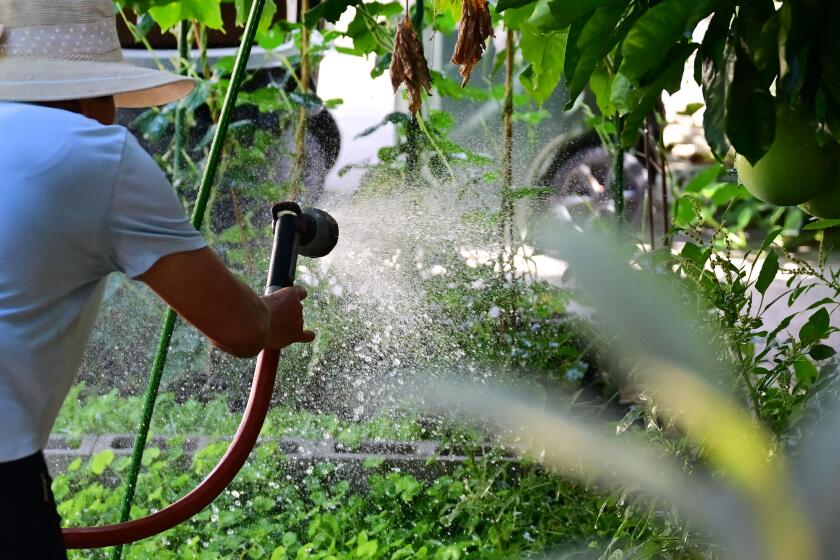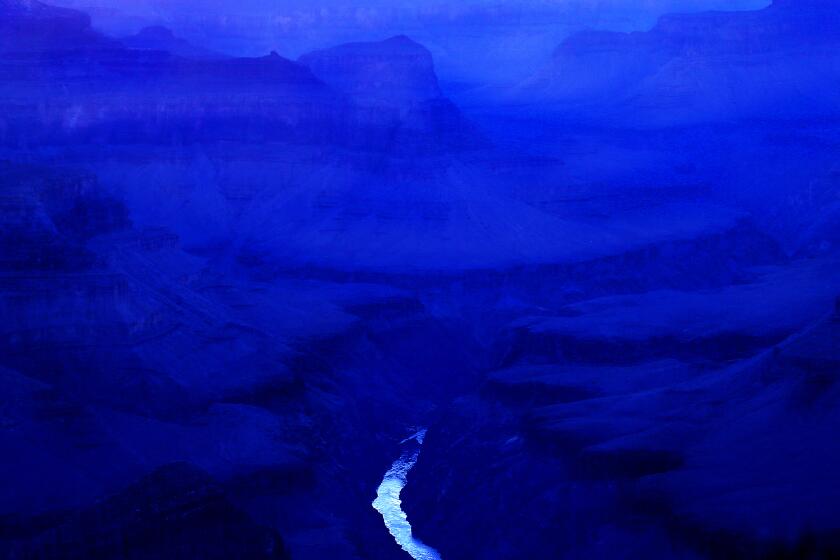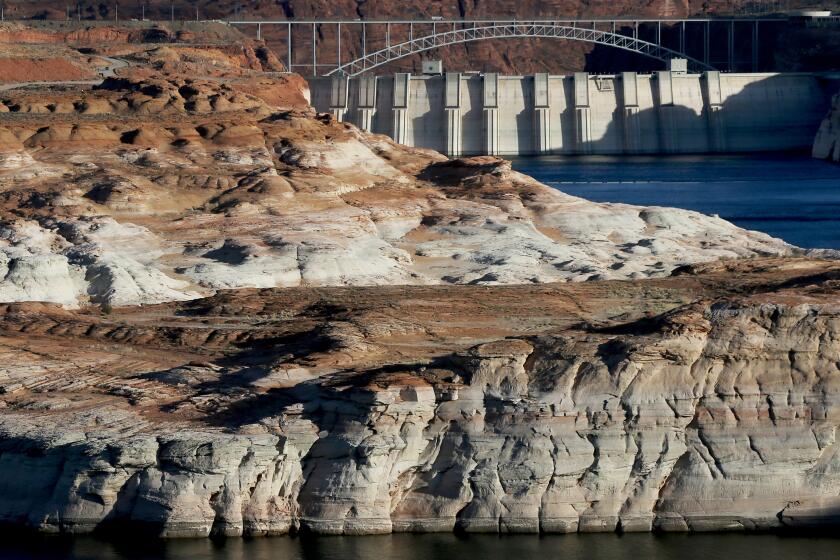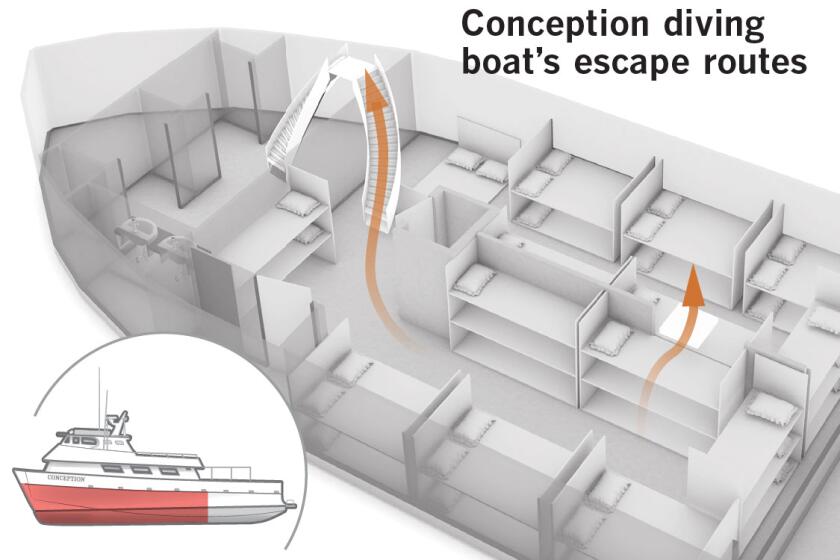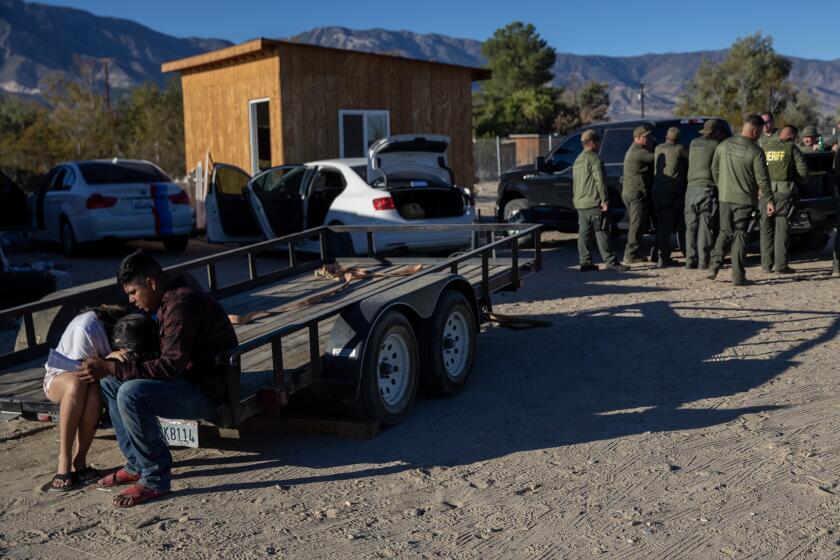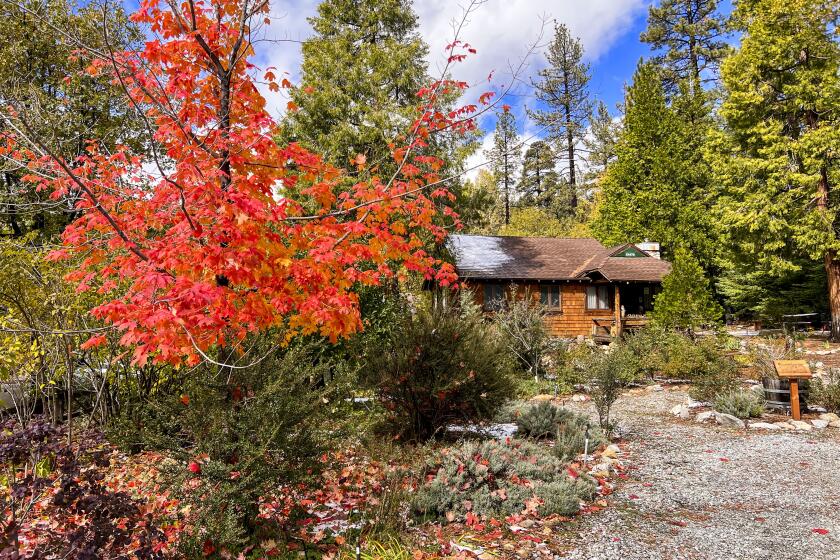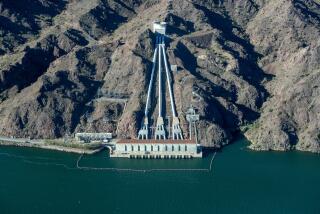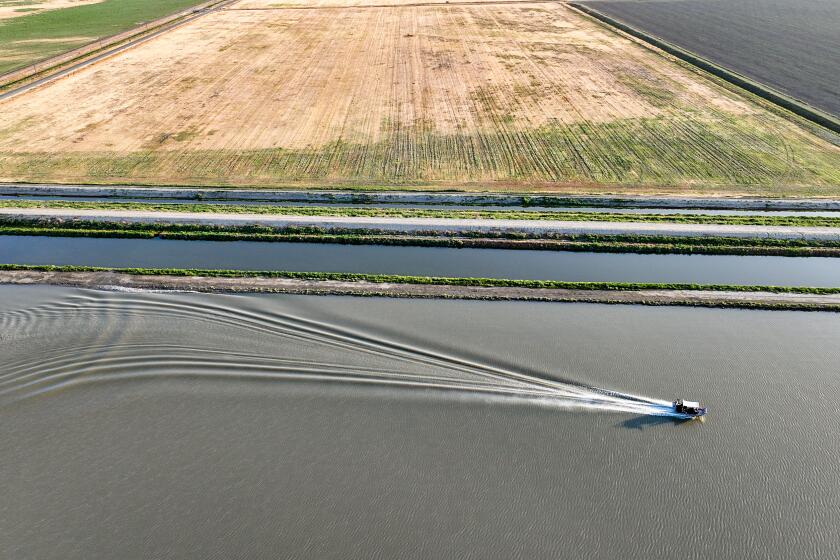Growing fears of ‘dead pool’ on Colorado River as drought threatens Hoover Dam water
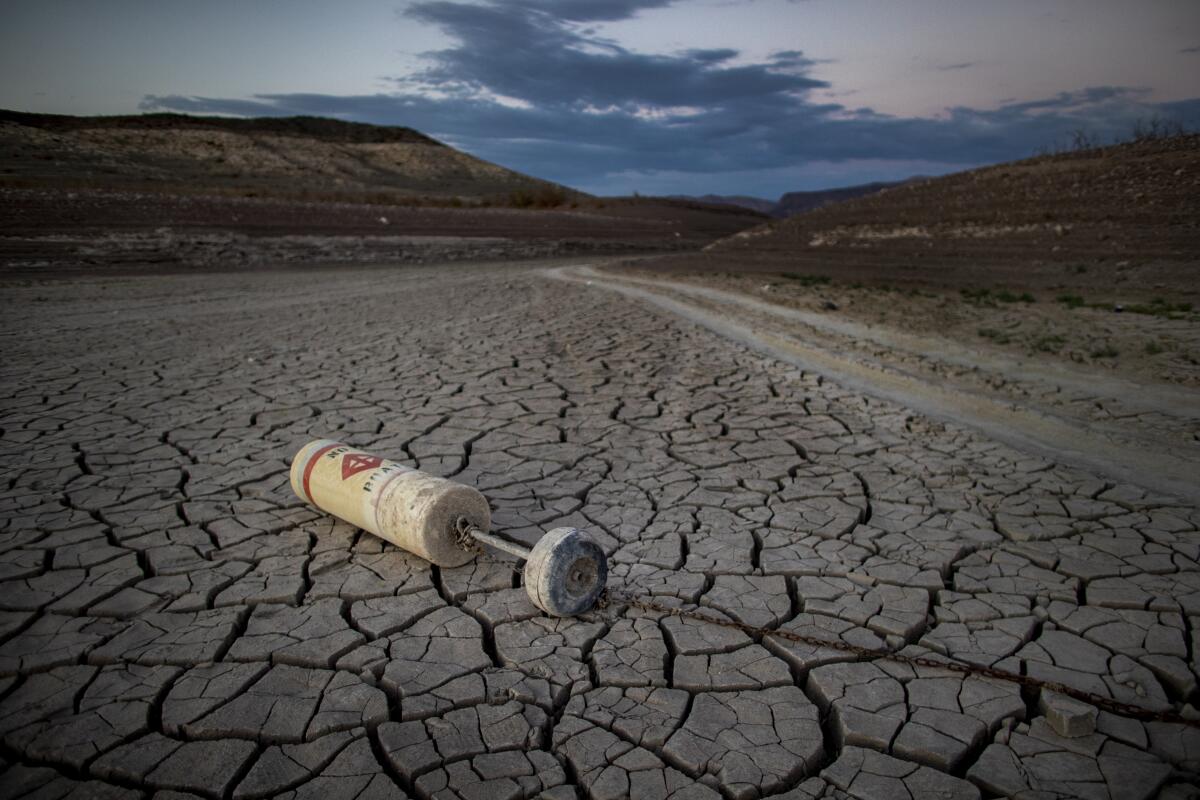
The Colorado River’s largest reservoirs stand nearly three-quarters empty, and federal officials now say there is a real danger the reservoirs could drop so low that water would no longer flow past Hoover Dam in two years.
That dire scenario — which would cut off water supplies to California, Arizona and Mexico — has taken center stage at the annual Colorado River conference in Las Vegas this week, where officials from seven states, water agencies, tribes and the federal government are negotiating over how to decrease usage on a scale never seen before.
Outlining their latest projections for Lake Powell and Lake Mead, the nation’s two largest reservoirs, federal water managers said there is a risk Lake Mead could reach “dead pool” levels in 2025. If that were to happen, water would no longer flow downstream from Hoover Dam.
“We are in a crisis. Both lakes could be two years away from either dead pool or so close to dead pool that the flow out of those dams is going to be a horribly small number. And it just keeps getting worse,” said Tom Buschatzke, director of the Arizona Department of Water Resources.
He said there is a real danger that if the coming year is extremely dry, “it might be too late to save the lakes.”
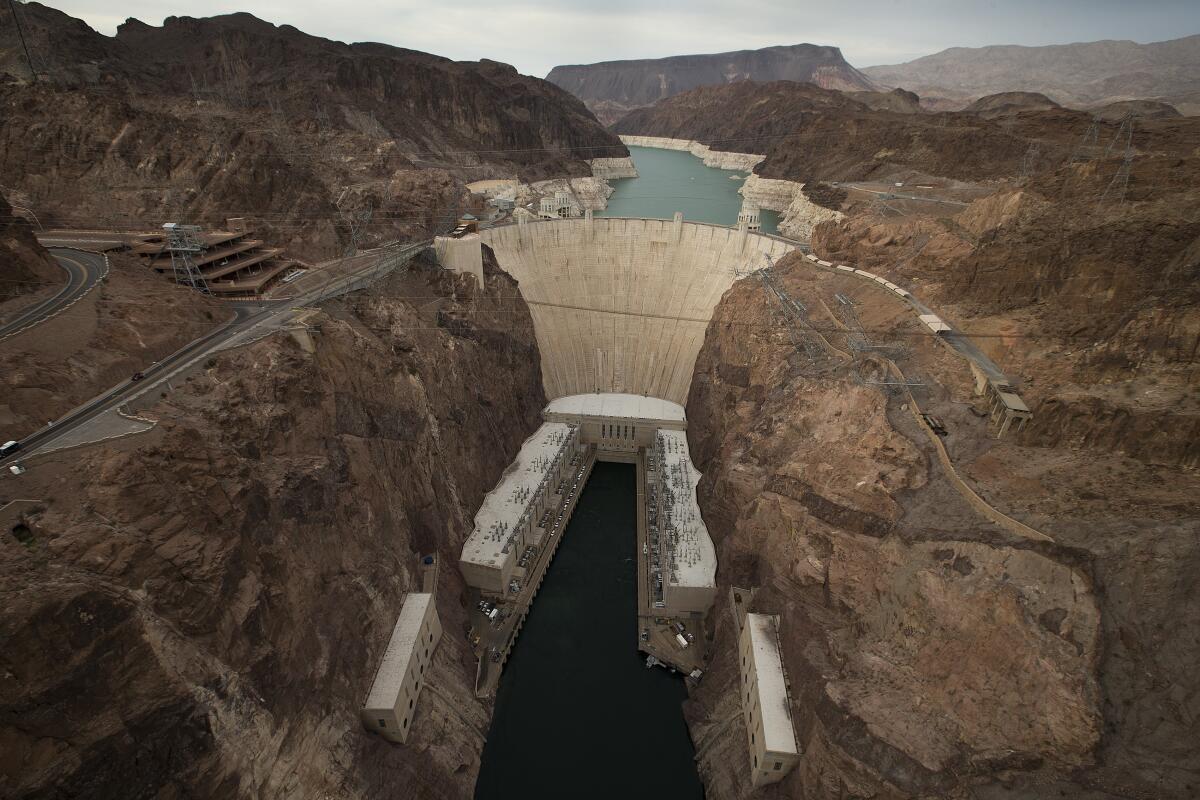
The Colorado River has long been severely overallocated, and its flows have shrunk dramatically during a 23-year megadrought supercharged by global warming.
Over the last six months, federal officials have pressed water managers in the seven states that rely on the river to come up with plans for major cutbacks. But negotiations have so far failed to produce an agreement, and the voluntary cuts states and water agencies have proposed remain far from the federal government’s goal of reducing water use by 2 million to 4 million acre-feet per year — a decrease of roughly 15% to 30%.
The Metropolitan Water District of Southern California is calling on water agencies in the region to immediately reduce their use of all imported supplies.
Faced with the prospect of federal authorities imposing mandatory, large-scale cutbacks, officials from states and water districts have been holding private, backroom talks in an effort to reach an agreement.
“We’re still talking among the states to try to figure something out,” Buschatzke said. “I think the scale is daunting.”
Buschatzke and other water managers say they fear the talks on voluntary cuts aren’t enough. Officials from Arizona, Nevada and other states have urged federal officials to take such steps as accounting for the evaporation losses from canals, as well as redefining what is considered a “beneficial use” of water — a change that could, possibly, open the pathway for large, federally mandated cuts.
The U.S. Department of the Interior and its Bureau of Reclamation have already begun a process of revising the existing rules for water shortages. They have also started reducing the amount of water they release from Glen Canyon Dam over the next five months, in hopes of boosting reservoir levels until the spring runoff arrives. And they have warned they may need to further cut the amount of water they release from the dam, which would shrink the flow downstream and accelerate the decline of Lake Mead.
“I think the states and the federal government aren’t moving quickly enough,” said John Entsminger, general manager of the Southern Nevada Water Authority. “The circumstances on the ground are overtaking the pace of discussions and negotiations.”
Entsminger said the negotiations are continuing but he didn’t see anything of significance coming out of the conference.
“One way or another, physics and Mother Nature are going to dictate outcomes if we don’t come up with some solutions,” Entsminger said. “I would like every water user on the Colorado River to recognize that the 21st century has substantially less water than the 20th century. And all of the institutions we built in the 20th century need to be adjusted — in months, not years — in order to face the reality of less water for every user, in every sector, in every state.”
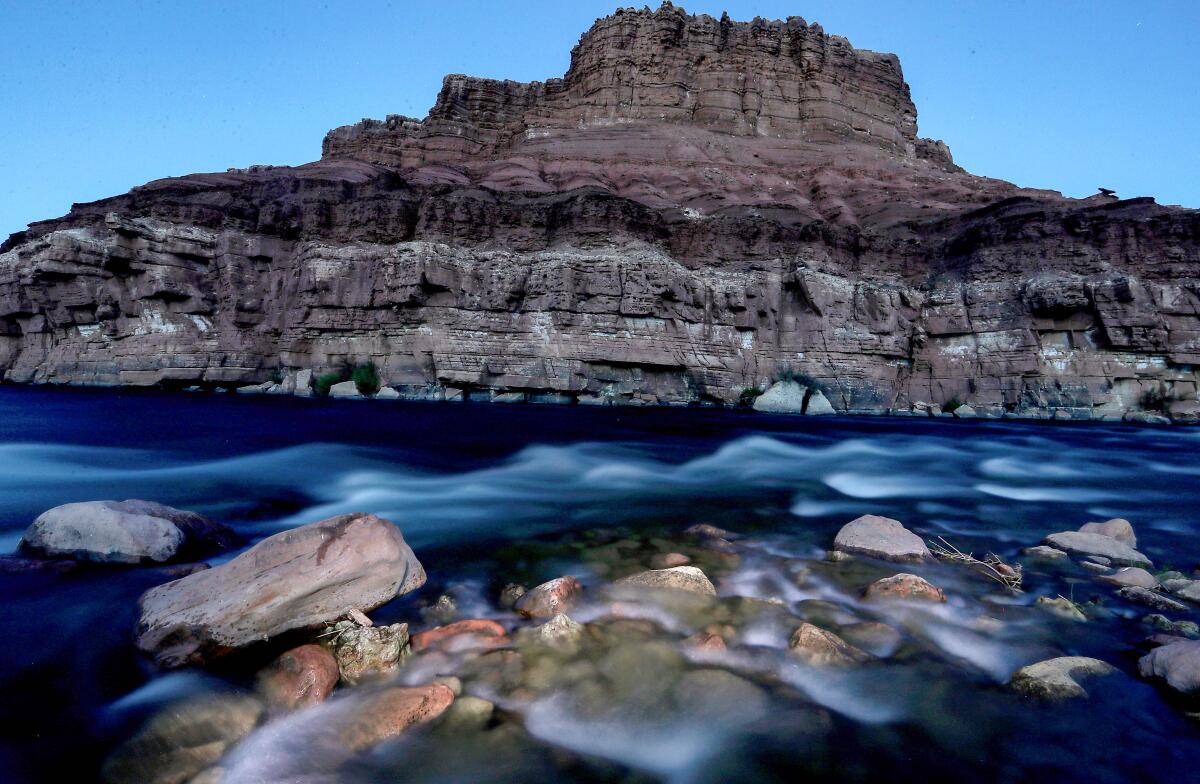
Federal officials have given the states and water suppliers a Jan. 31 deadline to deliver an alternative plan for the Bureau of Reclamation to consider as part of its review, said Henry Martinez, general manager of California’s Imperial Irrigation District, which uses the single largest share of the river to supply about 500,000 acres of farmland in the Imperial Valley.
“We have about six weeks of heavy work to be done collectively with all seven states to come up with something different,” Martinez said.
“It’s not going to be easy, to say the least,” Martinez said. “But there was a commitment from all of us to be working over the next six weeks to actually come up with something we can provide back to the bureau to consider as another plan.”
So far, four California water districts have proposed to reduce water use by up to 400,000 acre-feet per year. That would amount to about 9% of the state’s total water allotment from the river through 2026.
In return, the Biden administration has agreed to provide $250 million for projects at the shrinking Salton Sea in an effort to accelerate work on wetlands and dust-control projects. The federal government is also offering to pay farmers and others who agree to forgo some of their water, tapping into $4 billion set aside for drought response efforts in the Inflation Reduction Act.
The largest share of California’s reductions would come from the Imperial Irrigation District, while cities throughout the region could face mandatory water rationing by April under a plan being considered by the Metropolitan Water District of Southern California.
Water managers, tribal leaders and others at the conference discussed how the climate-change-driven aridification of the West is dramatically shrinking the flow of the river.
“The water is going away. And it is a crisis for everyone,” said Melvin Baker, chairman of the Southern Ute Indian Tribe in southwestern Colorado. “We actually have seven rivers that flow through our reservation. And right now, some of those rivers are looking like creeks in midsummer. There’s no water.”
Colorado River reservoirs are dropping amid drought and climate change. The Biden administration has announced new measures to address the crisis.
Ted Cooke, the outgoing manager of the Central Arizona Project, which delivers Colorado River water to some 5 million people, said the real risk of reservoirs bottoming out must lead to action.
“This is on our doorstep,” Cooke said. “Reclamation and the states and the tribes must reach a compromise approach quickly to reduce significantly the risks, in a way that can do the least harm, and prevent the complete draining of the reservoirs.”
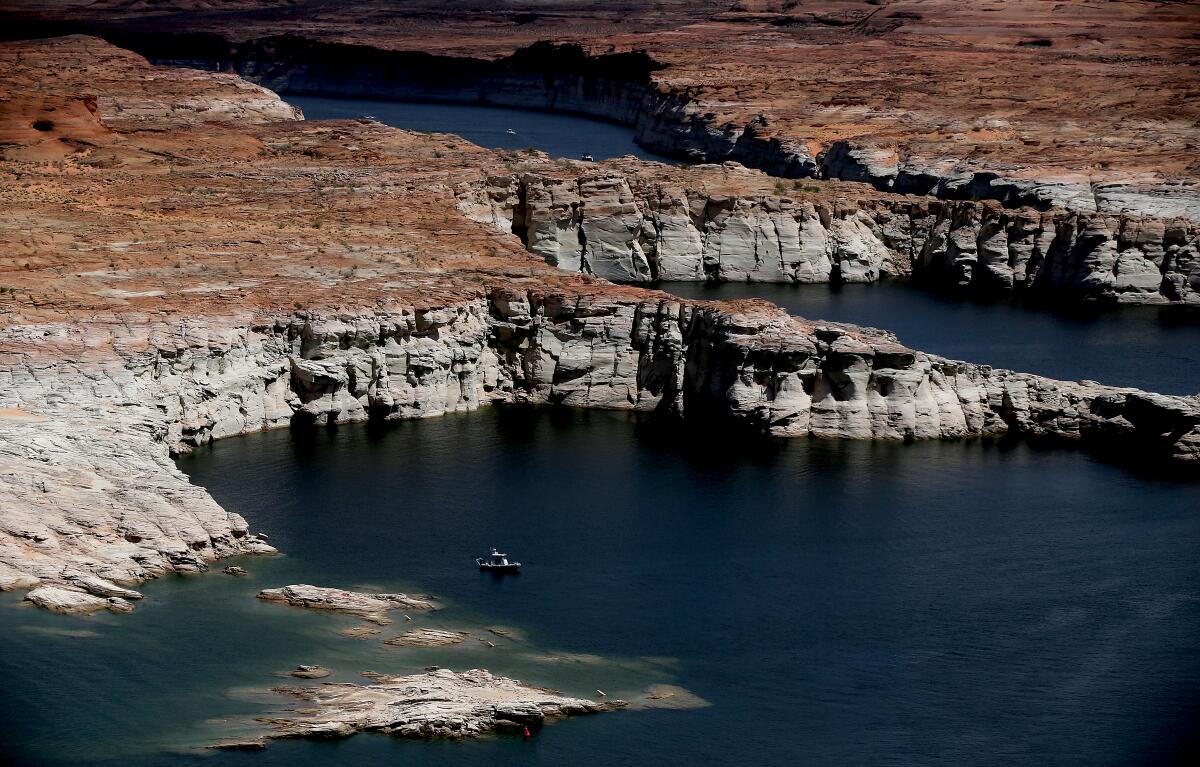
Speaking at the conference, James Prairie of the Bureau of Reclamation presented a black-and-white photo of Glen Canyon Dam in 1963, before the reservoir was filled. He noted that the water level in Lake Powell is now 37 feet above “minimum power pool,” a point at which the dam would no longer generate electricity.
Prairie said the agency is looking to maintain Lake Powell above that level. If the reservoir falls much lower, he said, dam managers would need to stop using the main intakes, called penstocks, and could release water only through lower bypass tubes, which have reduced capacity.
“These are elevations that we don’t want to be seeing at Lake Powell,” he said.
The federal government’s leadership role will be critical in moving toward a solution, said Felicia Marcus, a researcher at Stanford University and a former chair of California’s State Water Resources Control Board.
“I think there’s a lot of peril and promise at the place we’re at right now,” Marcus said. “It’s a shame that we’re this close to Armageddon in order to get folks to be able to rise to the occasion.”
A water-strapped celebrity enclave that has long relied on imported supplies has taken a significant step toward water recycling.
Even though giving up water may be politically challenging, the cuts have become inevitable.
“We’ve got to do something that’s going to be painful for everybody, although the shape of that pain is going to be different depending on the party,” based on their water rights, Marcus said.
What will be key in any agreement, Marcus said, is “to come up with something that may seem painful, but that people can acknowledge as being fair.”
The crisis presents an opportunity, not only to address the shortage but also to begin to change the system of managing the river, said Kathy Jacobs, director of the University of Arizona’s Center for Climate Adaptation Science and Solutions.
“I think right now, everybody’s blinders are on, and they’re so focused on protecting their own interests that they’ve lost sight of the long-term opportunities here,” Jacobs said. “We really need to be prepared for really significant long-term consequences.”
